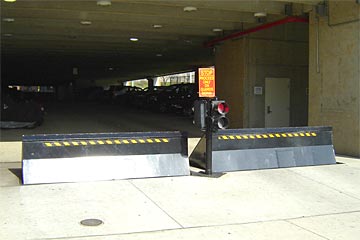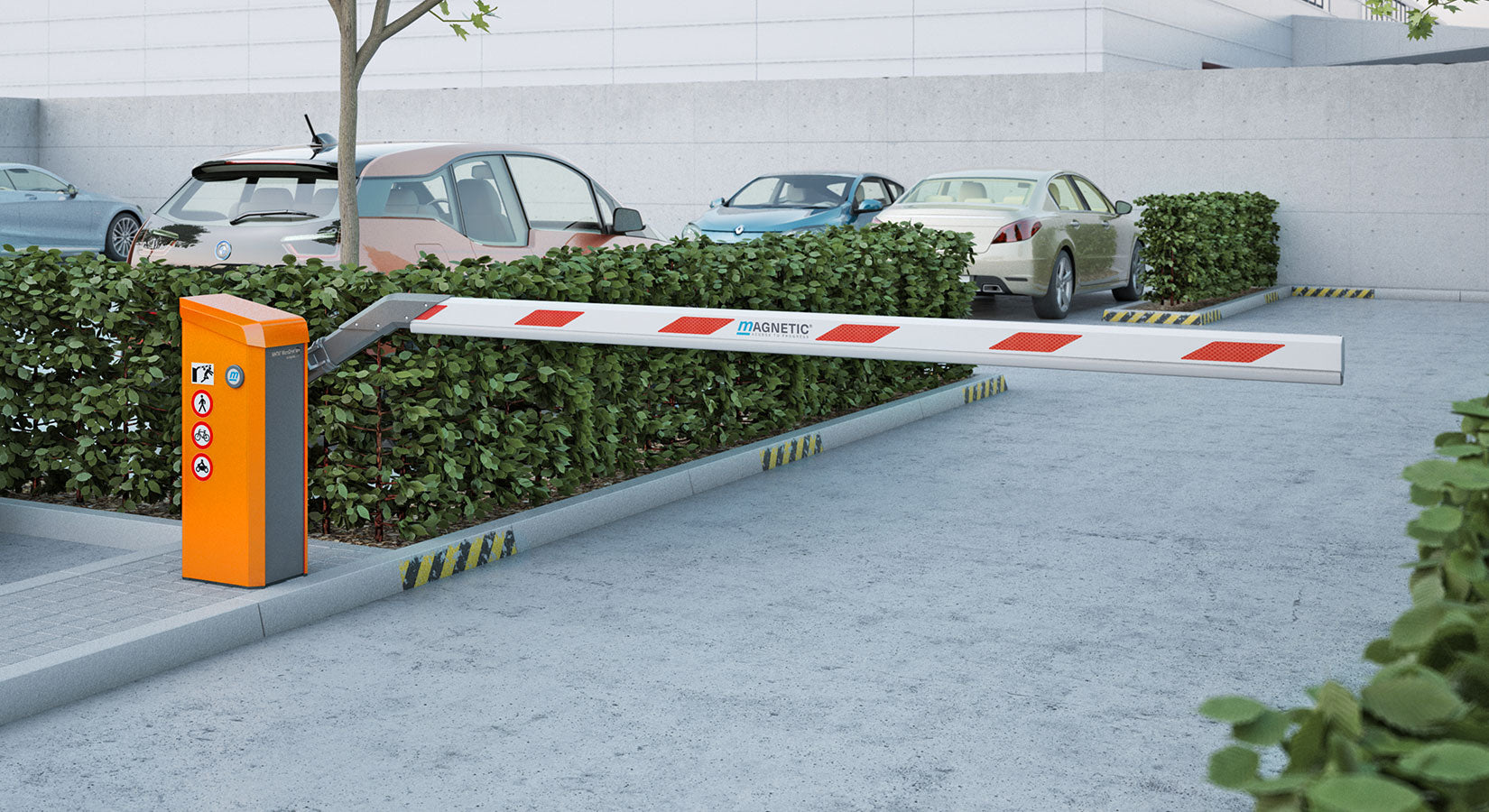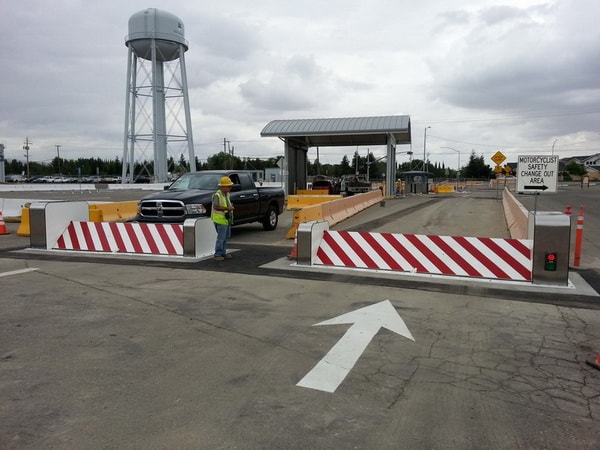The Buzz on Wedge Barriers
The Ultimate Guide To Wedge Barriers
Table of ContentsThings about Wedge Barriers3 Simple Techniques For Wedge Barriers


18 might be done quicker, conveniently, and price properly. FIG. In certain personifications, the anchor 30 might be a steel framework consisting of plates, beam of lights(e. g., I-beams ), and/or various other frameworks that are secured within the structure 14, which may be concrete. At the surface area 12, a top side 28 of the support 30 may go to least partially revealed
, consequently making it possible for the attachment of the obstacle 10 to the anchor 30. g., threaded holes)in several beam of lights or plates of the anchor 30 may be revealed to the surface 12. In this way, screws 32 or various other mechanical fasteners may be used to protect the obstacle 10 to the anchor 30. As the obstacle 10 is placed to the surface 12 of the foundation 14, collection of particles and other product beneath the barrier might be lowered, and parts of the bather 10 might not be exposed to listed below quality environments. As suggested by reference character 52, the training mechanism 50 includes elements disposed under the wedge plate 16. The parts 52 under the wedge plate 16 may include an electromechanical actuator, a webcam, one or more web cam surface areas, and so forth. Additionally, the lifting system 50 consists of a spring setting up 54
The spring pole 58 is paired to a cam(e. g., webcam 80 revealed in FIG. 4) of the lifting device 50. The springtimes 60 disposed concerning the spring rod 58 are kept in compression by springtime supports 62, consisting of a taken care of spring support 64. That is, the fixed spring support 64 is repaired relative to the foundation 14 and the rest of the bather 10.
Not known Factual Statements About Wedge Barriers
The continuing to be force used to
the cam to deploy release wedge plate 16 may be provided by an electromechanical actuator 84 or other actuator. The springtime setting up 54 and recommended you read the actuator 84(e. Wedge Barriers. g., electromechanical actuator)may operate with each other to translate the webcam and raise the wedge plate 16.
As pointed out over, the springtime assembly 54 puts in a continuous pressure on the cam, while the electromechanical actuator may be managed to apply a variable force on the webcam, consequently making it possible for the lifting and reducing( i. e., releasing and withdrawing )of the wedge plate 16. In certain personifications, the consistent pressure applied by the spring setting up 54 might be adjustable. g., electromechanical actuator) is disabled. As will certainly be appreciated, the spring assembly 54 may be covered and safeguarded from debris or various other components by a cover plate(e. g., cover plate 68 revealed in FIG. 4) that may be substantially flush with the elevated surface 38 of the foundation 14. As discussed above, in the deployed position, the wedge plate 16 serves to block gain access to or traveling beyond the barrier 10. The obstacle 10(e. g., the wedge plate 16 )may obstruct pedestrians or automobiles from accessing a building or path. As gone over over, the barrier 10 is affixed to the anchor 30 secured within the foundation 14,

front brackets 71. Consequently, the affiliation assemblies 72 may pivot and turn to make it possible for the collapse and extension of the affiliation assemblies 72 during retraction and release of the bather 10. The linkage assemblies 72 reason motion of the wedge have a peek at this site plate 16 to be limited. As an example, if a vehicle is taking a trip in the direction of the released wedge plate 16(e. As an example, in one circumstance, the safety legs 86 might be prolonged throughoutupkeep of the obstacle 10. When the security legs 86 are deployed, the security legs 86 redirected here sustain the weight of the wedge plate 16 versus the surface 12. Consequently, the training mechanism 50 may be deactivated, serviced, removed, replaced, and so forth. FIG. 5 is partial perspective sight of a personification of the surface-mounted wedge-style obstacle 10, showing the web cam 80 and the cam surfaces 82 of the training system 50. Particularly, two camera surface areas 82, which are referred to as lower cam surface areas 83, are placed listed below the web cam 80. The reduced webcam surfaces 83 may be repaired to the surface 12 (e. As an example, the reduced camera surfaces 83 and the installing plate 85 may form a solitary piece that is secured to the support 30 by screws or various other mechanical fasteners. Additionally, 2 camera surfaces 82, which are referred to as top web cam surfaces 87, are positioned over the camera 80 and coupled to (e. In various other personifications, stepping in layers or plates may be placed between the surface 12 and the reduced web cam surface areas 83 and/or the wedge plate 16 and the upper web cam surfaces 87 As mentioned over, the camera
80 equates along the cam surface areas 82 when the wedge plate 16 is lifted from the withdrawed setting to the deployed placement. Furthermore, as mentioned over, the spring assembly 54 (see FIG. 3 )may give a force acting upon the webcam 80 in the instructions 102 through springtime rod 58, which may reduce the pressure the electromechanical actuator 84 is required to use to the cam 80 in order to activate and lift the wedge plate 16. 1 )to the deployed setting(see FIG. 4). As revealed, the webcam 80 consists of track wheels 104(e. g., rollers), which get in touch with and translate along the camera surfaces 82 during procedure.